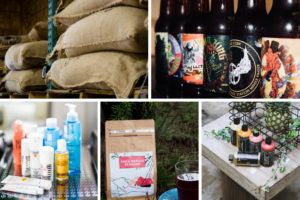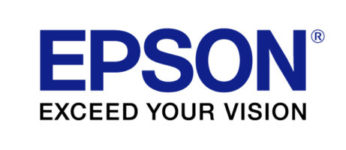 The production of goods involves a lot of moving parts. One of those moving parts is coding or marking your primary and secondary packaging with specific codes, numbers, graphics, barcodes or a combination of each. Depending on the stage in which your business is in, there are many solutions for getting this done.
The production of goods involves a lot of moving parts. One of those moving parts is coding or marking your primary and secondary packaging with specific codes, numbers, graphics, barcodes or a combination of each. Depending on the stage in which your business is in, there are many solutions for getting this done.
If you are a small food producer just starting out with low production volumes, perhaps you are looking for a quick and easy portable inkjet coder.
Or maybe you just landed a big contract with a retailer and now you need to look at a more sophisticated production line complete with a conveyor system and a stationary inkjet printer for all of your coding needs.
To help you figure out the best solution for your production line, we cover all the bases from the differences between portable and stationary inkjet printers to the variety of inline inkjet systems and the pros and cons of each.
Portable Inkjet Printers vs. Stationary Inkjet Printers
Before we begin, you should understand that we offer 2 different kinds of inkjet coders/printers, portable (or handheld) and stationary (or inline).
Handheld inkjet printers are useful for:
- Marking products where there isn’t an automated conveyor line or material handling equipment in place.
- Being used as a backup coder if there is a problem with the automatic conveyor line or some products don’t get marked correctly by the inline inkjet system.
See how one of our client’s, Michele from Titan Clean Energy Projects, uses her portable Reiner inkjet coder to add batch numbers to pails.
Inline inkjet printers are useful for:
- High speed production and printing required for large volumes of product marking.
- Instances where automation is more efficient than handheld operating.
Here is an example of a production line set up with an RN Mark inline inkjet printer.
From our experience, the handheld inkjet coders are generally used with start-up companies that haven’t yet secured large contracts with retailers and have small volumes to produce but still have to adhere to industry regulations. A company may graduate to an inline system when larger contracts are established, and higher volumes are being ordered/produced.
The handheld units have a button that must be triggered in order to print (foot pedal option available for some models). The inline systems require movement of the containers and use either a photocell sensor or external encoder to synchronize the print speed and print delay.
Want to learn more about the Handheld Inkjet Printers we supply – check out this video where Clint compares 4 models of Reiner portable inkjet printers.
Inline Printing Solutions – CIJ vs DOD
The very basic difference between CIJ (Continuous Inkjet) and DOD (Drop On Demand) is that in CIJ printing, the ink is being continuously circulated throughout the printer from the fluids system through the print head, and back to the fluids system. In DOD technology, the ink is only dispersed when the printer is printing and comes from an ink cartridge.
So CIJ needs continuous pressure to recirculate ink, DOD does not.
CIJ (Continuous Inkjet) Printing
CIJ Manufacturers include: Video Jet, Markem Imaje, Domino, Liebinger, Foxjet, Matthews Marking, Linx, Citronix, EBS, Hitachi, Best Code
CIJ is ideally used where extremely high volumes and extremely high line speeds are required.
The Strengths of CIJ:
- Ultra fast print speeds (up to 10x the speed of other methods).
- Large volume ink storage results in less fluid changes.
- Ultra low ink costs.
- Many options for ink formulations.
The Weaknesses of CIJ:
- High initial printer costs.
- Lower print quality (dot matrix).
- Dedicated staff needed to operate.
- Regular maintenance is necessary.
- Additional makeup fluids (chemicals/additives) are required.
- Costly replacements of air filters, fluid filters, pumps, modules, etc.
- Paid regular visits from Manufacturer reps.
- Does not handle down times or gaps in production well.
DOD (Drop On Demand) Printing
DOD Printing can be one of 2 technologies:
- TIJ (Thermal Inkjet)
- Piezo Electric (aka Micro Piezo, Piezo for short)
Many of the above CIJ manufacturers also have DOD inkjet printers. Here are some other manufacturers of DOD printers: RN Mark, Squid Ink, Rea Jet, Anser, Incjet, Little David, Meenjet.
Both the TIJ and Piezo printers are ideal for small to medium production volumes with medium to high production line speeds and sporadic production runs. They also both make use of cartridge-based inks which means very little to no maintenance required and easy operation by multiple staff members.
TIJ (Thermal Inkjet) Printers
The strengths of TIJ:
- Fast print speeds.
- High resolution print quality.
- Cartridge contains both ink and print head internally.
- Maintenance free operation.
- Low initial printer costs.
- Handles down time well.
- No makeup fluids needed.
The Weaknesses of TIJ:
- Higher ink costs.
- Expiry dates on ink.
- Cartridge chips can fail.
- Less options for ink formulations.
- High volume printing requires frequent cartridge changes.
Piezo Inkjet Printers
The Strengths of Piezo:
- Fast print speeds.
- High resolution print quality.
- Minimal maintenance required.
- Handles down time well.
The Weaknesses of Piezo:
- Higher ink costs.
- Expiry dates on ink cartridges.
- Ink bases cannot be interchanged within printer (water/solvent/oil).
- High volume printing requires frequent cartridge changes.
Want to see all of this explained in video, watch below.
Solvent Ink vs. Water Ink vs. Oil Ink
Each inkjet printer manufacturer may use different ink formulations. Typically, the inks will be meant to print on one or two different surface types, porous or non-porous.
Porous surfaces can be un-coated cardboard, paper, wood and some fabrics.
Non-porous surfaces are metal, plastic, glass, coated cardboards/papers and some fabrics.
In general, porous surfaces use water-based inks or oil-based inks, while non-porous products use solvent-based inks.
The chemicals in the solvent-based inks are meant to dry very quickly, so they will require some maintenance including solvent cleaners and sprays, and with TIJ cartridges, a print head cap to seal.
The water-based inks require little to no maintenance as they dry very slowly and do not crust over on the print head.
With the RN Mark RN Jet Piezo series of printers, the oil-based ink for porous surfaces allows even longer periods of down time as the oil does not evaporate as fast as water. This ink system is truly maintenance free when compared to other ink formulations.
With all this being said, some manufactures have porous, non-porous and semi-porous ink formulations, which can make things confusing.
This is why it is important to discuss your specific containers with your inkjet specialist as the ink and material need to be compatible. We highly recommend having your dealer do test printing on your containers before you make a purchase. This will assure the best ink adhesion for the best price possible.
Which Printer Do I Need?
High Volume, High Speed Production Line
- If you have a high volume, high speed production line and there is not a need for high resolution printing, the CIJ Printer option is probably best for you.
Medium Volume Production Line with Frequent Downtime
- If you have a small to medium volume production line that will not be running constantly and needs to be operated by several employees, DOD printers are most likely the best option for you.
Secondary Packaging Production Line with a Need for Printing Barcodes, Logos and Text
- The DOD printers have the ability to print a combination of graphics and alphanumeric characters due to their high resolution and are great for printing on secondary packaging such as cardboard boxes that are being used for shipping.
Small Volume and No Production Line OR Awkward Packaging
- One of our handheld inkjet coders is probably your best bet as a starting point. Then, as your production environment grows, you can explore the best option for you in the stationary inkjet printer options.
Want to learn more about the DOD printers that Neumann Marking supplies, visit the RN Mark page on our online shop here.
Or give our inkjet specialists, Clint or Cam, a call at 780-434-9152 or Toll Free at 1-800-268-7636 to discuss your production environment and the packaging you need to print on.
Also be sure to stay tuned for our upcoming blog post where we compare the 8 different RN Mark Inline Inkjet Printers and what they are best suited for.








 Help Desk Service – Contact us Between the Hours of 7:30 – 4:00 (MST)
Help Desk Service – Contact us Between the Hours of 7:30 – 4:00 (MST)